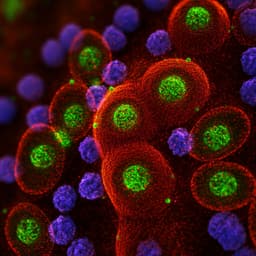
Medicine and Health
Regulating protein corona on nanovesicles by glycosylated polyhydroxy polymer modification for efficient drug delivery
Y. Miao, L. Li, et al.
Discover how glycosylated polyhydroxy polymer-modified nanovesicles can revolutionize drug delivery! This research conducted by Yunqiu Miao and colleagues reveals how specific modifications can suppress immunoglobulin adsorption, leading to prolonged circulation and enhanced tumor targeting. A fresh strategy in nanocarrier design awaits you!
~3 min • Beginner • English
Related Publications
Explore these studies to deepen your understanding of the subject.







